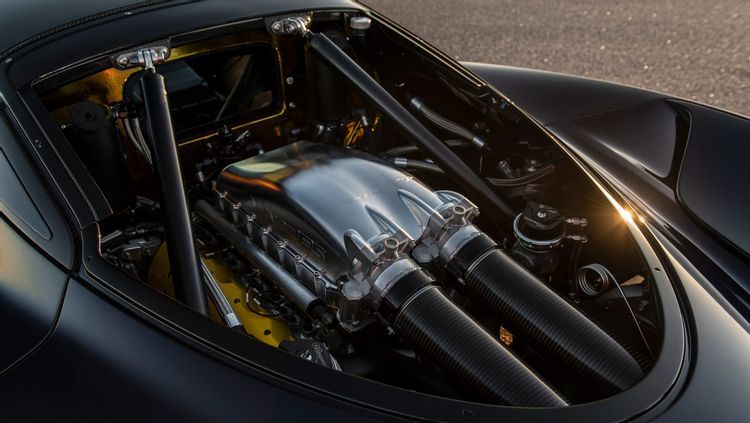Humanity's craving for speed is the very reason supercars exist. It is why the car industry has never stopped the planning and development of better, faster vehicles.
In recent years, a handful of companies, Bugatti being the official first, have been finally able to design and manufacture road-legal cars that could surpass the 300 MPH mark. But taking a look at the pace at which technology has been progressing through the 21st century, makes one wonder why it took so long to get here.
Well, there are a lot of variables that exist within the 300 MPH formula. The 250 MPH barrier was surpassed almost 15 years ago. But it is not as simple as gaining an extra 50 MPH of speed. If you have ever driven a car at high speeds, you might have noticed that it takes a lot more to go from 100 MPH to 150 MPH than to go to 100 MPH from 50 MPH.
One might assume that making a car reach 300 MPH requires twice the power of one that goes 150 MPH, but that is simply not true. If a specific vehicle is able to reach the speed of 150 MPH using 200 HP of power, it would need 1,600 HP (eight times the previous amount) to go 300 MPH.
Air Resistance And Aerodynamics
When it comes to breaking speed records, one of the biggest challenges designers and engineers face is the aerodynamics of it all. Air behaves differently at different speeds and it changes its flow taking different routes on the bodywork as the numbers on the speedometer get higher and higher.
What this means for the car is that it needs to be designed specifically to be driven at those high speeds and this usually translates into a lack of performance on the track and in cornering, since the downforce required to improve the cornering creates even more air resistance.
Another critical factor to the design is the fact that air resistance goes up in squares, meaning the vehicle is fighting against a squared amount of energy for every extra MPH of speed it gains.
Power Matters, Lots of It
The sheer amount of power needed to push a mechanical beast to go over 300 MPH is not only determined by the displacement of the engine, but also the amount of air and fuel going into the chambers, the rates at which the engine spins, and thousands of other details that go into making a powerhouse that could make such numbers.
And not only do these absurd amounts of power need to be made to reach record-breaking speeds, but the engineers also have to make it so that the engine is reliable and does not break under all of this pressure. The quality of these pieces of machinery is no less than crucial.
Taking a look at the 1,817 HP Hennessey Venom F5 and its powertrain gives us a perspective on how Hennessey decided to approach the making of their 300 MPH surpassing hypercar. The twin-turbocharged 6.6-liter V8 engine used in the F5 can reach an RPM of 8,600 while the 8.0-liter W-16 engine used in the competitor Bugatti has a redline of 6,000 RPM. The faster-spinning smaller engine makes up for the displacement and the number of cylinders here.
Tires: The Points Of Contact
Imagine trying to beat the world’s fastest running speed record in a set of slippers. All of the science surrounding the power and the aerodynamics mentioned earlier does not mean anything if there are no appropriate means of gripping the vehicle to the ground.
Tires are the only points of contact between the machine and the earth, making them one of the most vital parts of any performance-oriented design. A regular tire does not have the ability to withstand the tearing force (about 7 tons of it) in velocities as high as 300 MPH.
Bugatti’s approach to the tire challenge was to have a rather thick layer of carbon fiber built under the carcass of the tire, both re-enforcing the tire and preventing any more added weight.
While surpassing the 300 MPH mark was a huge breakthrough for the car industry, we know that the next one will be coming soon. However, the further we go into the realms of speed, the harder it gets for man-made machines to go faster.
No one truly knows what the limit is when it comes to road-legal gas-guzzling cars, but we do know for sure that the ambition and the drive never stops.




